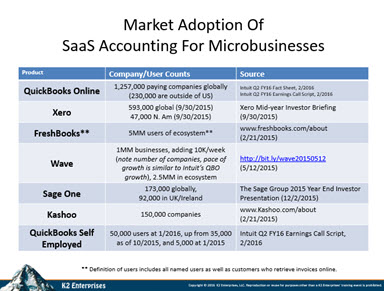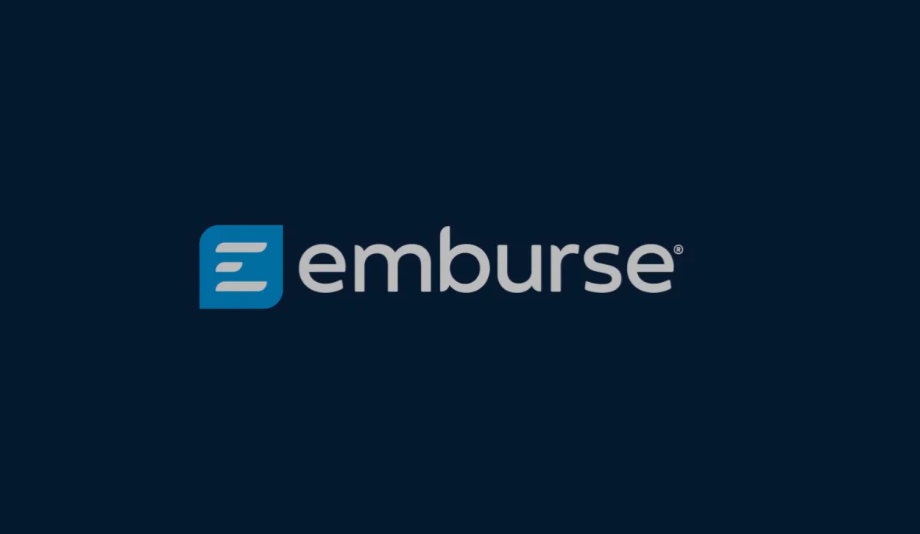From the June 2016 Issue
Most of you who know me understand that I’ve had the privilege of having a long career in technology. The opportunities to help vendors build hardware products, as well as networking, productivity, accounting and document management software have been some of the most enjoyable, enlightening and enabling engagements of my career.
In the 1980’s, I conceptualized the pyramid chart representing the accounting software market, backed it up with Census Bureau and Small Business Administration (SBA) statistics, and have maintained a version of the pyramid ever since. I wanted to have real numbers from a public source. Further, I granted permission to many organizations to use this model to present their products conceptually to the market. Consider the following chart:
Note in the slightly lighter color in the pyramid is the Small to Medium Business (SMB) space. Although difficult to get the logos exactly positioned next to the pyramid, as well as to represent the range of coverage, the placement loosely represents the capability of a product. There has been a frenzy of vendors creating new, browser-based SaaS products since 1998, which are pictured on the left. A significant number of these are for entry level businesses, services only business, or micro-businesses. While these products are interesting and important, they are not the focus of this article (a chart of public adoption rates is at the end of this text). Virtually 100% of all traditional premise based products are offered in a hosted environment for a monthly fee today if you want to minimize your upfront capital expenditures. Frequently a more robust hosted product, Epicor for example, is less expensive than a SaaS product with all of the add-ons required. A side benefit may be greater speed, too.
Why should a business choose a more sophisticated SMB product?
There are a number of reasons to choose a more sophisticated, comprehensive, complex and expensive product. Although not intended to be comprehensive, consider the following:
- The business has greater needs, without the need (or budget) for the highest level ERP or Enterprise system. SMB businesses frequently need:
- More flexibility without having to design, program, and implement new processes
- Multi-location/company, possibly with consolidation
- Multi-lingual and multiple localizations, in some cases
- More transactions, so need something with a “real” SQL database, for 6+ users. SQL will almost always be sold and implemented separately, unless you are using a SaaS product
- More complex transactions – heavy manufacturing, complex inventory, kitting, bill of materials, job costing, NFP, grants, revenue recognition, intercompany transactions, multiple tiers of consolidation and minority interests
- More granularity and control of applications, with a role-based security interface
- More reporting and analytics options
- More third-party solutions available to solve difficult issues and specialized industry needs
- Sizing considerations
- Implementation budget – $15,000 to $1MM
- Historical VAR model (although that is changing with many vendors – Open Systems, Epicor, etc.), so you may wind up dealing direct with the publisher
- Company size not hard and fast
- 5 – 2,500 employees
- $1MM-$1B revenue
- Smaller companies who do hard things (grants, job costing, manufacturing, international, etc.) will need higher-end SMB solutions than EE/revenue guidelines may dictate
Typically, a few key questions about size, complexity, locations, multi-currency, and type of business will filter products quickly to a few candidates that are a “best fit”. Most publishers have refined their products so far that they target micro-verticals, that is to say a very specific need. For example, industrial fasteners, plumbing, flooring or electrical supplies are micro-verticals best served by a few products from the myriad of products available.
What are a few SMB product examples?
And for that matter, who are the key players? In increasing order of sophistication, this list represents the best of the 300 or so providers in the U.S. market (products were sorted within the company for increasing capabilities, too, and a high end product pushed the publisher further down the list):
- Intuit
- CYMA
- Sage
- 50/50c
- 100/100c
- 300/300c
- Live
- 500
- X3/X3 Online
- Specialty
- Financial Force
- Open Systems
- OSAS
- TRAVERSE
- Exact
- Macola ES
- Globe
- SYSPRO
- Intacct
- Acumatica
- NetSuite
- Microsoft Dynamics
- GP
- SL
- NAV
- AX
- SAP
- Business One
- ByDesign
- Deltek
- Epicor
- Eclipse
- Prophet 21
- Epicor ERP
- Infor
- Distribution SX.e
- Syteline
- Fourth Shift
- Infor 10x
- Lawson
While there are a number of other good products that could be named, it is important to pick a publisher that has a long term record. Your organization is likely to use a properly selected SMB product for up to ten years, and you’ll want the company and product to provide all the support you need during that timeframe. Further, mature products have more of the kinks and bugs worked out. Your job should be to make sure that the implementation project is managed properly, not debug a new system like we frequently did in the 1980’s and 90’s. If you’d like to check that a product you are considering is good for your business or your clients, please send an email providing the name of the product, and some background information as noted in the few key questions and outline above.
Classical mistakes and misguided selection
Although some vendors are trying to claim that the feature wars are over, note that these claims are usually made by publishers that lack features in their products. The good news is that most products don’t have glaring deficiencies like they did 20+ years ago, which drive a very detailed needs analysis with tools like The Accounting Library. We still find merit in this feature based approach. However, a reasonable alternative is to do a process mapping and a gap analysis. Failing to do enough analysis on the front end of an implementation is still the key reason for failure in SMB and ERP implementations. A simple process to follow can be found at http://www.accountingsoftwareworld.com/articles-white-papers/selection-steps. A great installer can still make a marginally capable product work, but most businesses are best served by selecting the right product with a competent installer.
One final caution, contacting a publisher or VAR before you have done some preliminary work can cause a number of problems including not locating the best installer because you are treated as a “claimed lead”, and you may early be sold on the wow factor of a demonstration instead of the thoughtful work of finding a product that fits the business best. Improper selection can lead to cost and schedule overruns and complete project failures.
Thanks for reading CPA Practice Advisor!
Subscribe Already registered? Log In
Need more information? Read the FAQs
Tags: Small Business





